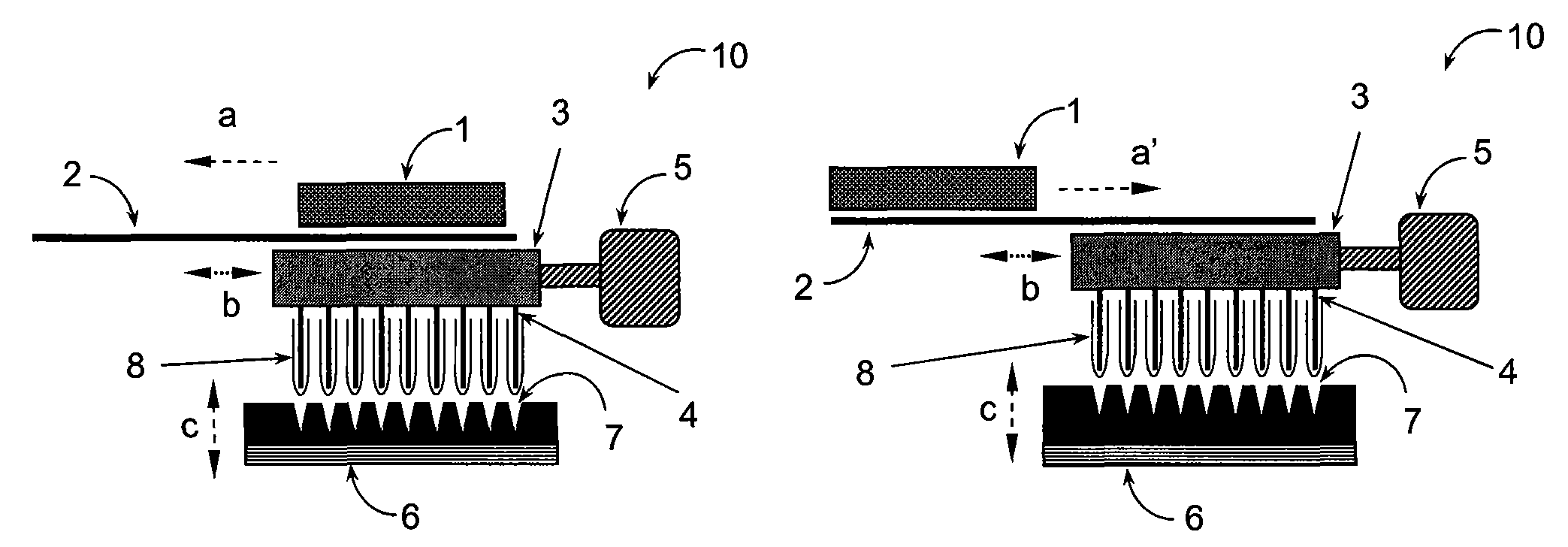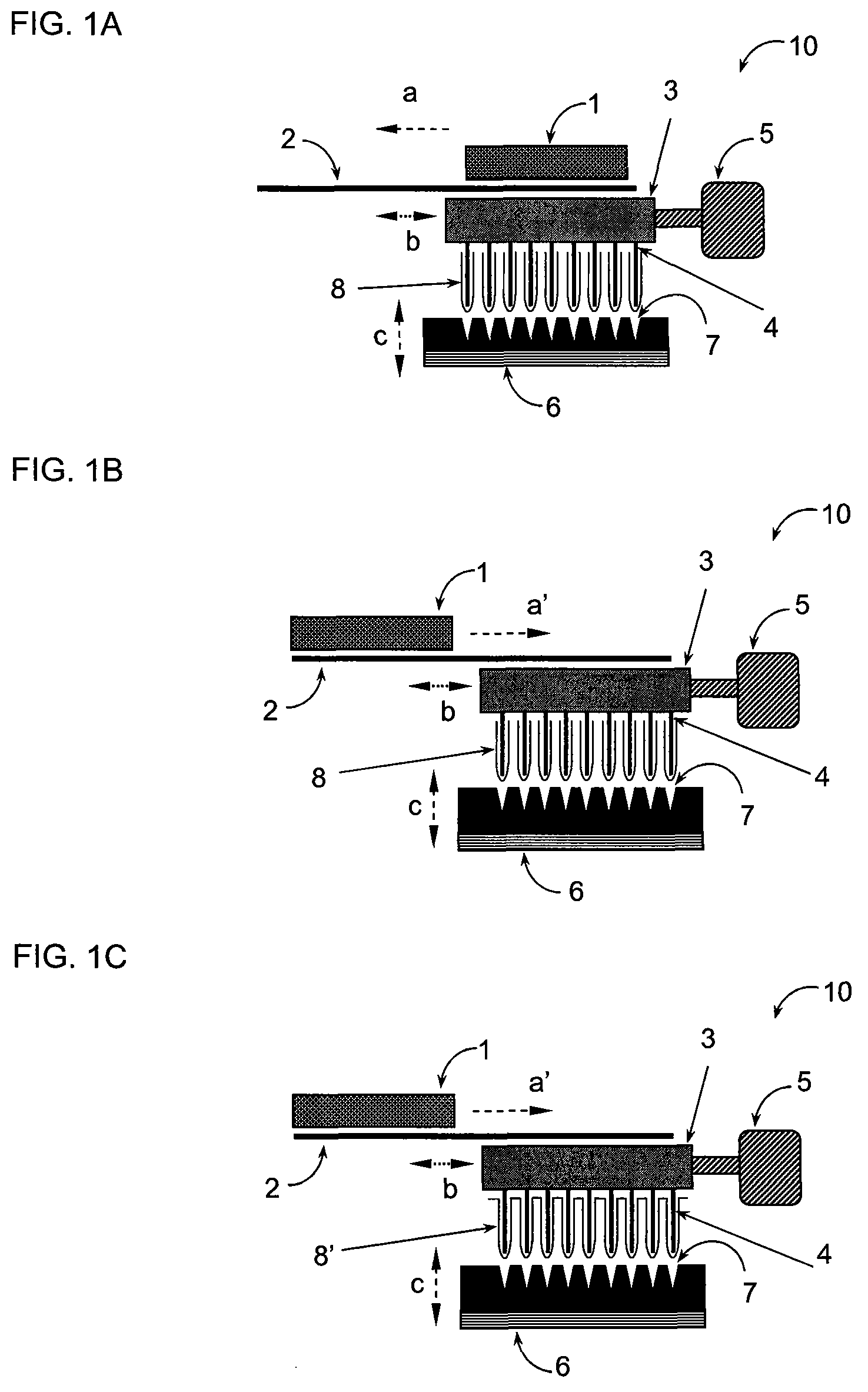Device and method for separating magnetic or magnetizable particles from a liquid
a technology of magnetic or magnetizable particles and liquid separation, which is applied in the direction of high gradient magnetic separators, electrostatic separation, water/sludge/sewage treatment, etc., can solve the problems of high material consumption, inconvenient removing of magnetic particles from reaction vessels, and inability to manage or pay for a purely manual handling of large numbers of samples, etc., to achieve small elution volumes
- Summary
- Abstract
- Description
- Claims
- Application Information
AI Technical Summary
Benefits of technology
Problems solved by technology
Method used
Image
Examples
Embodiment Construction
[0038]Basically, any hard-magnetic materials known to the person skilled in the art may be used to produce the permanent magnets, particularly ferrite, Al—Ni—Co alloys and rare earth magnets (preferably NdFeB); such magnetic materials and magnets are commercially available from various manufacturers.
[0039]The number of magnetizable bars attached to the head piece depends on the maximum number of samples, that is, on the maximum number of recesses (“wells”) in the liquid containers, which are to be treated simultaneously. As containers, microtiter plates are used with preference, especially those with 96, 384 or 1536 wells, so that corresponding numbers of magnetizable bars are provided for those cases. Furthermore, also suitable as containers are sample tubes or reaction vessels of a volume of, for example, 0.015 to 100 ml; these can be treated individually or in groups, in each case in combination with magnetizable bars adapted thereto.
[0040]The magnetizable bars, optionally the he...
PUM
| Property | Measurement | Unit |
|---|---|---|
| volume | aaaaa | aaaaa |
| thickness | aaaaa | aaaaa |
| thickness | aaaaa | aaaaa |
Abstract
Description
Claims
Application Information
 Login to View More
Login to View More - R&D
- Intellectual Property
- Life Sciences
- Materials
- Tech Scout
- Unparalleled Data Quality
- Higher Quality Content
- 60% Fewer Hallucinations
Browse by: Latest US Patents, China's latest patents, Technical Efficacy Thesaurus, Application Domain, Technology Topic, Popular Technical Reports.
© 2025 PatSnap. All rights reserved.Legal|Privacy policy|Modern Slavery Act Transparency Statement|Sitemap|About US| Contact US: help@patsnap.com



